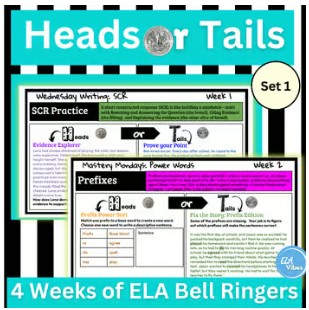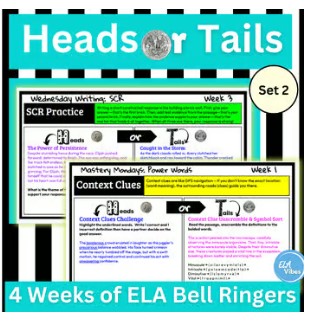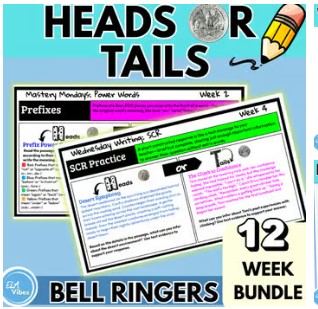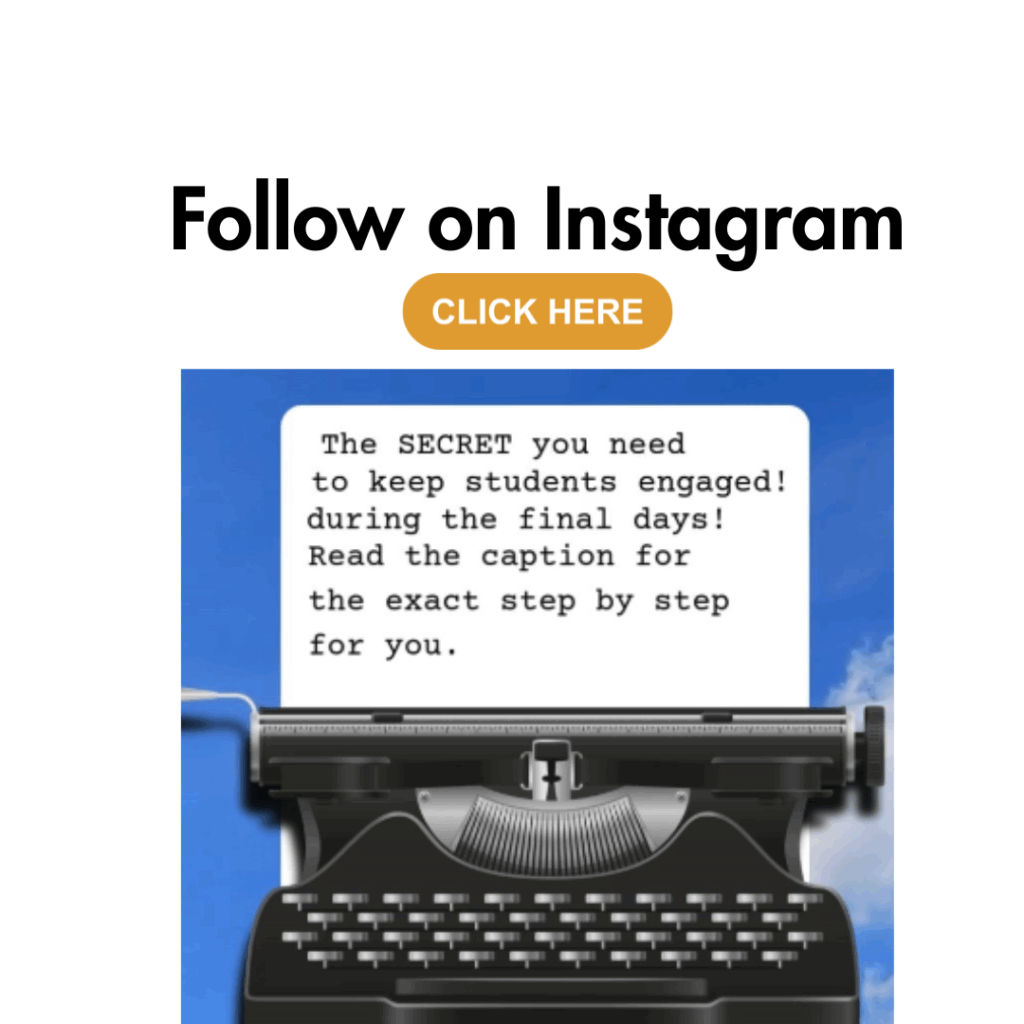Last updated on June 14th, 2025 at 11:36 pm

Bell work isn’t busy work. It’s a powerful way to start your class period with purpose and spiral in previously taught skills. In just 5–10 minutes, the right bell ringers can activate prior knowledge, build routine, and strengthen comprehension. If you’ve ever felt like the first time in your day is wasted while students shuffle in and out of focus, it’s time to rethink your opening minutes.
In this post, we’ll break down what bell ringers are, how they boost engagement, and how to design the best bell ringers that make every class time count.
What Are Bell Ringers in the Classroom?
Bell work or bell ringers are short, targeted activities that students complete at the start of the class period. These 5-minute tasks provide a structured transition into learning, helping students shift into the learning zone.
They can:
- Reinforce skills from previous lessons
- Introduce new topics with low pressure
- Offer students a chance to reflect or write
- Establish clear routines and expectations
Using bell work consistently promotes classroom management and maximizes instructional minutes. There is never enough time in the day, so use it strategically. It doesn’t take much time to see results. The only consistency you need is showing up with a plan. That plan? Start each day with a bell ringer routine. It’s the perfect way to make every class period count.
For a no prep 4-week bell ringer resource, click here.
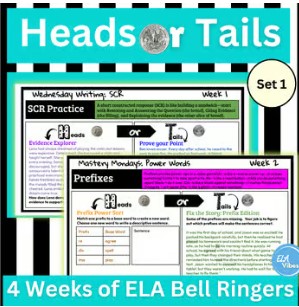
Are Bell Ringers Effective for Learning?
Absolutely! And for a couple of reasons. The old saying, “If you don’t use it then you lose it,” is true. Students are taught so many skills during the week that their brains prioritize the most current. That’s where daily warm ups come in. They help teachers assess the level of understanding across the whole class.
When done well, they:
- Activate prior knowledge
- Provide daily spiral review of previous taught skills
- Establish focus through a quick way to transition into learning
- Reinforce routines that minimize wasted class time
Pairing bell ringers with essential questions and previous skill review can deepen reading comprehension. It’s a great way to start any lesson.
Why Teachers Love Bell Ringers
Every class period starts with its own challenges. Maybe you have a super tough transition from home room, or maybe your morning work feels more like a mess than a learning opportunity. Here’s why bell ringers are the perfect way to reset the tone:
- They create structure for both students and teachers.
- They reduce the chaos of the beginning of class.
- They help support student engagement across grade levels.
- They provide a valuable peek into your students’ level of understanding.
Plus, they’re adaptable. Whether you’re a veteran or a different teacher covering for the day, having a go-to bell ringer routine gives you stability when your day feels purposeful.
How Long Should a Bell Ringer Take?
A high-quality bell ringer should take no more than 5–10 minutes. Any longer, and you’re likely dipping into core instruction. The goal is to:
- Your goal is to maximize class time, not replace your lesson.
- Use a timer or have students track how long it takes to complete their bell work.
- Make it a consistent bell ringer routine so students know exactly what to expect.
For some groups, especially reluctant students, 3–4 minutes might be the right fit. The key is consistency and a clear structure. Use it as a quick formative assessment to adjust instruction.

How to Make a Good Bell Ringer
The best bell ringers are:
- Focused
- Skill-specific
- Timely (5–10 minutes)
- Engaging
Try these strategies to make your bell ringers better:
- Keep it short and focused. Use a quick way to target one reading skill: main idea, theme, or figurative language.
- Use tools like Google Slides, Google Forms, or simple notebook paper.
- Spiral review for previously taught concepts to reinforce.
- Use a joy journal prompt: “Write about a time a book made you feel happy.”
- Post a question of the day to drive deeper thinking and class discussion.
- Incorporate visuals with a rotating bulletin board that displays responses.
For ready-to-use reading prompts, check out these ELA Bell Ringers for Grades 3–5.
What Is an Example of a Reading Bell Ringer?
Need a perfect fit for your grade levels? Try these:
📚Monday Metaphor: Read a sentence and highlight the figurative language.
“She was a tornado of thoughts.”
Students explain what the metaphor reveals about the character.
📚Joy Journal Wednesday: Prompt students to write a memory from a favorite book that brings them joy.
Combine writing and reading connection in one simple task.
📚Question of the Day Friday:
What can the reader infer about the character?
Students write a quick response using text evidence.
Digital Bell Ringers with Google Slides and Forms
No time to prep? Use Google Slides or Google Forms to post your daily warm ups. Here’s how:
- Slide 1: Today’s essential question
- Slide 2: Reading passage or prompt
- Slide 3: Writing prompt
You can even embed ELA bell ringers into your slides to align with current lesson plans.
Common Mistakes (And How to Avoid Them)
Bell work should never feel like a waste of time. Here’s what to avoid:
- Making it too long or complex
- Skipping feedback or discussion
- Using random, disconnected prompts
- Forgetting to align it with your weekly lesson planning
Conclusion: Start Strong with the Best Bell Ringers
Bell ringers are a great way to transform your class period from scattered to structured. With just 5–10 minutes of intentional morning work, you can boost student engagement, improve classroom management, and use every minute of class purposely. They help you identify gaps in your students’ level of understanding and set the tone for a purposeful day.
Grab these ready-to-use ELA Bell Ringers and start your own meaningful routines to make class time count.
Additional Resources to Add to Your Toolbox

Favorite Amazon Items to Support Bell Ringers
This post contains affiliate links, which means I may earn a small commission at no extra cost to you. I only share resources I truly love and use myself—thanks for supporting my corner of the teacher world!
